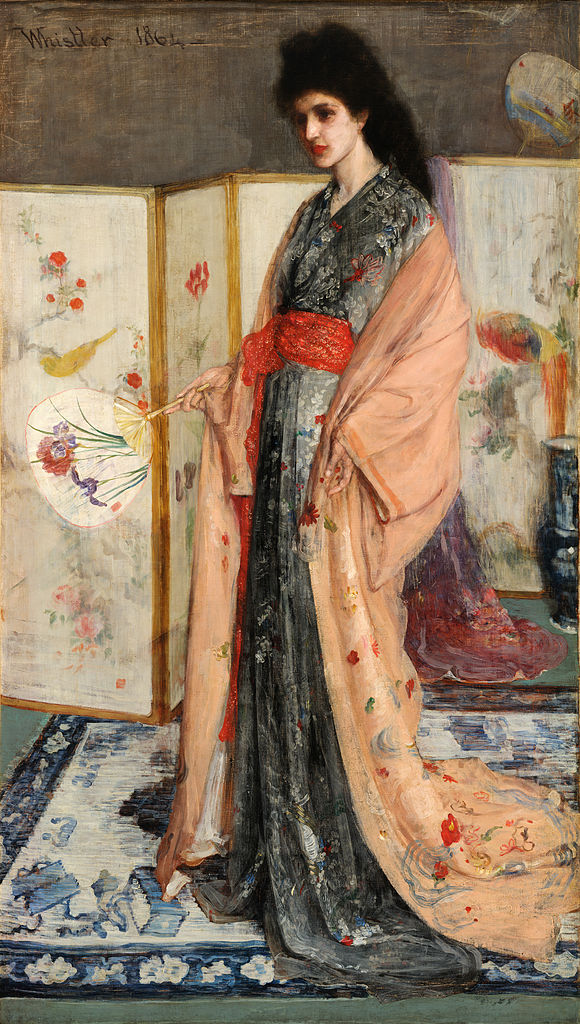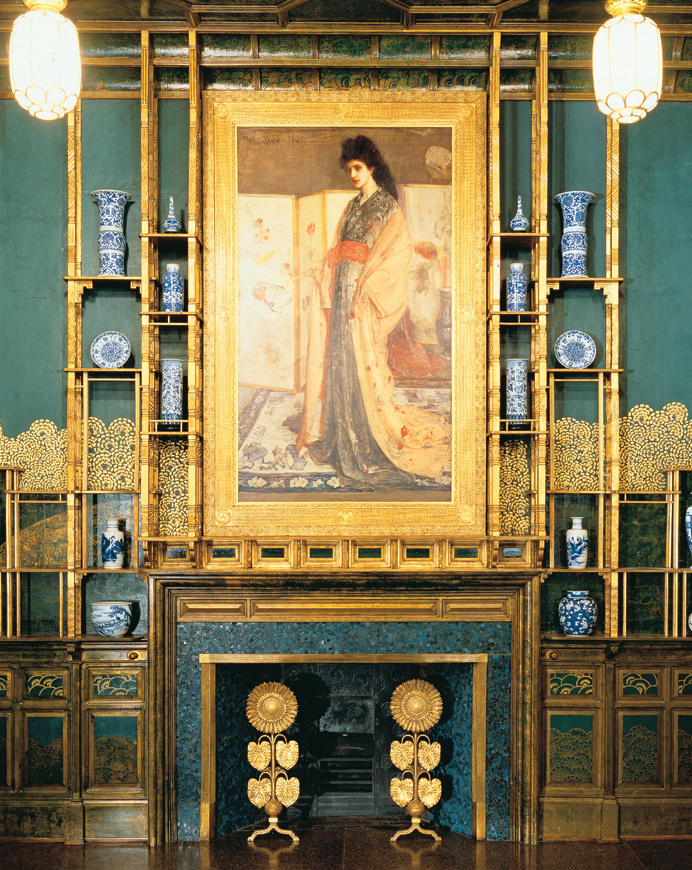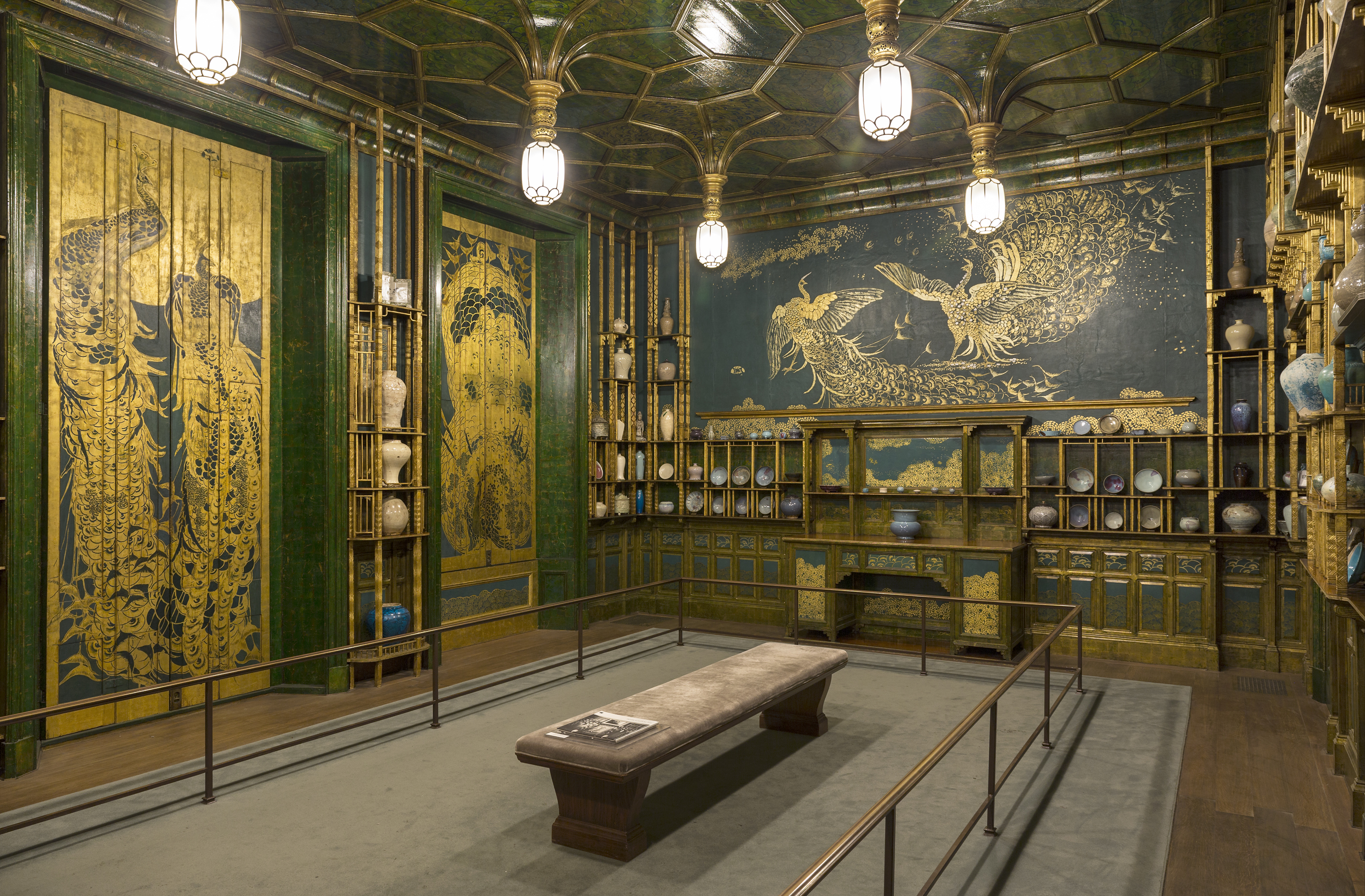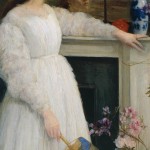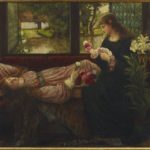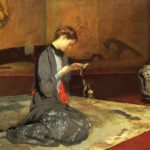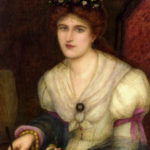Christina Spartali as The Princess from the Land of Porcelain by James Abbott McNeill Whistler, 1864
Rose and Silver: The Princess from the Land of Porcelain (better known as The Princess from the Land of Porcelain; also known by the French title La Princesse du pays de la porcelaine) is a painting by American-born artist James Abbott McNeill Whistler. It was painted between 1863 and 1865. The painting currently hangs above the fireplace in the Peacock Room at the Freer Gallery of Art in Washington, D.C.
Princess depicts a beautiful Western woman wearing a kimono and standing amidst numerous Asian objects, including a rug and screen as well as some porcelain. She holds a hand fan and looks at the viewer “wistfully”. The entirety is rendered in an impressionistic manner. Princess’s frame is decorated with a similar motif to the painting, with interlocking circles and numerous rectangles.
Aiko Okamoto-MacPhall notes that Whistler at the time he painted Princess often used large amounts of gold color, such as in his similarly themed Caprice in Purple and Gold No.2: The Gold Screen. Although the painting itself does not include any shades of gold, while displayed at the home of British shipping magnate Frederick Leyland it was set in a gold and blue interior.
Princess was painted between 1863 and 1865 by James Abbott McNeill Whistler, with Christine Spartali serving as the model; Owen Edwards of Smithsonian describes Spartali as “an Anglo-Greek beauty whom all the artists of the day were clamoring to paint”. Princess is one of several of Whistler’s works painted during this period that depict a Western woman in Asian surroundings and Asian clothes. Like in several other of his works, Whistler used sketches to prepare the general layout of the work. Other details were added in later. A surviving sketch depicts flowers, which were later eliminated from the work. The white Japanese screen in the background may have been one owned by Whistler.
When the portrait was completed, Spartali’s father refused to purchase it; Whistler’s large signature led another would-be buyer to withdraw. This may have led Whistler to develop his butterfly-style signature. The early history of the painting afterwards is fairly uncertain. In 1865 Princess was displayed at the Paris Salon. The following year, it was displayed at Gambart’s French Gallery in London; as Whistler was in South America when the exhibition finished, his friend Dante Gabriel Rossetti received the painting. It was then sold by either Rossetti or Joanna Hiffernan, Whistler’s muse and lover, to an unknown art collector thought to be Frederick Huth. Princess was returned to Whistler in 1867.
Several years later, the portrait was bought by Leyland. He displayed Princess in a dining room filled with Kangxi ceramics, but was displeased how it had been decorated by a previous artist, Thomas Jekyll. Whistler suggested that Leyland modify the coloring of the room to better accent his new acquisition; the redesign was later handled by Whistler himself, as Jeckyll was ill. The result was the Peacock Room. However, Whistler’s modifications were more in-depth than those wished for by Leyland, resulting in a quarrel between the two.
In 1892, after Leyland’s death, Princess was sold at Christie’s in London to Alexander Reid; it was sold to William Burrel a couple of years later. Princess was acquired by Charles Lang Freer on August 20, 1903, under the title The Princess of Porcelain for £3,750 (US$18,240) on Bond Street, in London. He kept it in his home in Detroit, Michigan; the following year he acquired the Peacock Room. In 1906 he donated both to the Smithsonian.
After Freer’s death in 1919, both Princess and the Peacock Room were moved to the Freer Gallery of Art in Washington, D.C., a Smithsonian museum established by Freer. Princess continues to be housed in the Peacock Room at the Freer Gallery, shown hung above the fireplace amidst a rotating stock of Asian ceramics.
Critics have seen influences of Japanese woodblock maker Kitagawa Utamaro in the painting, as well as 18th-century French chinoiserie stylings.
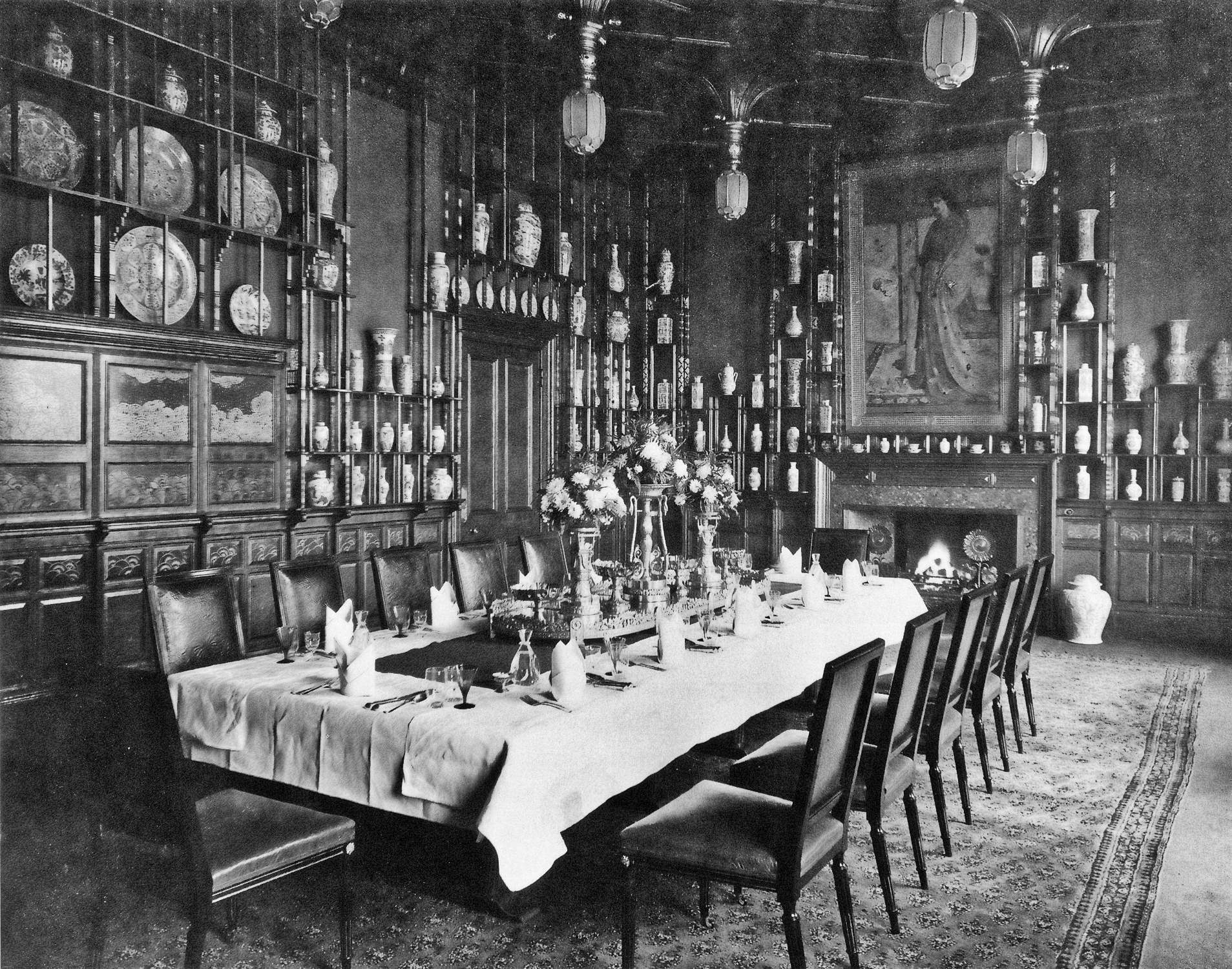
source: WikiCommons

